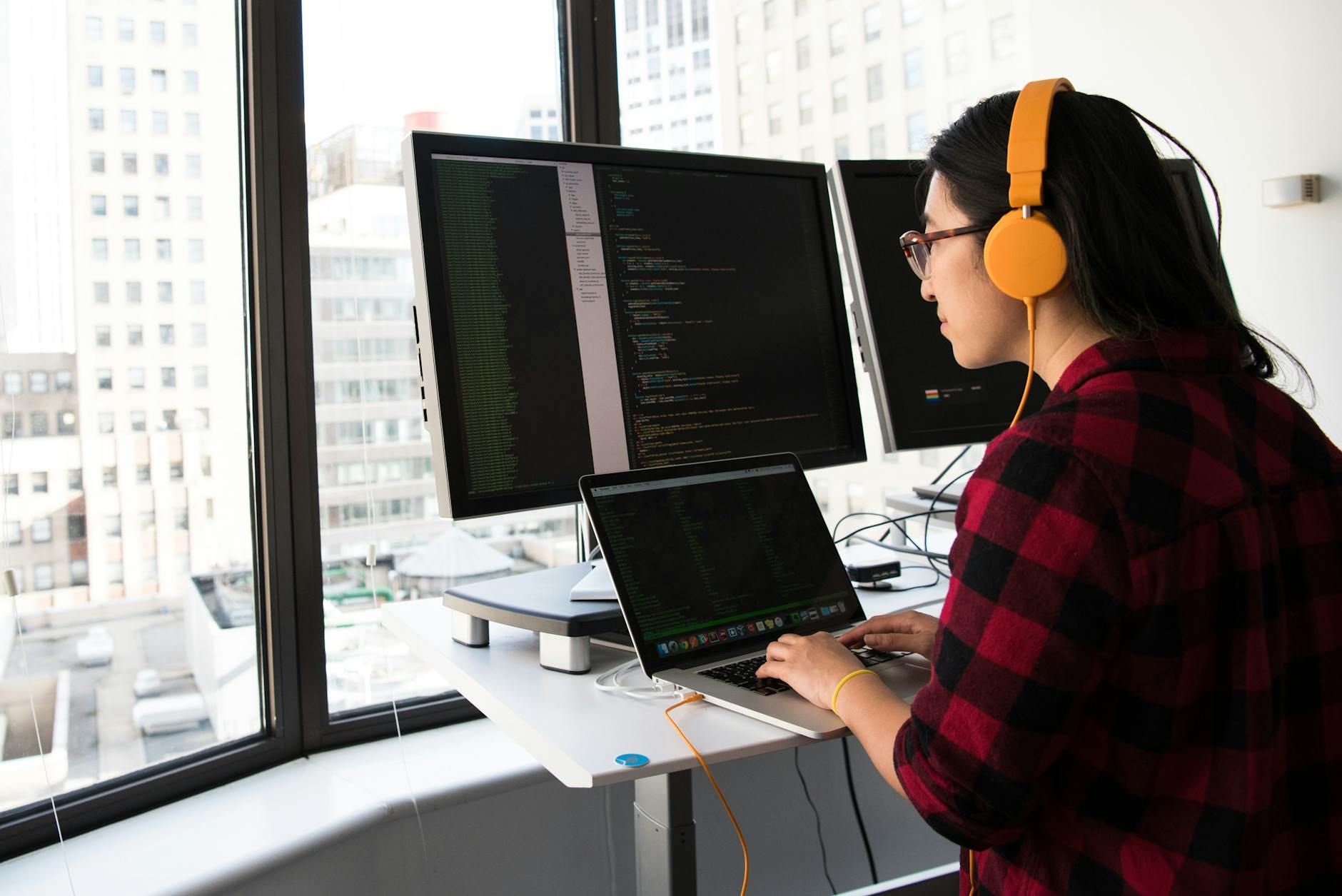AI ขึ้นสู่เวทีหลักในตลาดปี 2025: วอร์เรน บัฟเฟตต์ เดิมพันครั้งใหญ่, Nvidia ขับเคลื่อนนวัตกรรม, และความเป็นส่วนตัวกับการกำกับดูแลครองเวที
Author: Staff Writer

การปฏิวัติ AI ไม่ใช่เรื่องสมมติอีกต่อไปที่จำกัดอยู่แค่บล็อกเทคโนโลยีและการประชุมผลประกอบการรายไตรมาส ในปี 2025 AI กำลังพายจากคำฮือฮาสู่โครงสร้างพื้นฐาน โดยทุน นโยบาย และความรู้สึกของผู้บริโภคต่างสอดคล้องกันกับแนวคิดเปลี่ยนแปลงไม่กี่ข้อ ประเด็นที่สำคัญที่สุดคือการเดิมพันมูลค่า 68 พันล้านดอลลาร์ของวอร์เรน บัฟเฟตต์ในหุ้น AI เพียงสองตัว ซึ่งเป็นสัญญาณถึงขนาดและความอดทนที่นักลงทุนค่าแนวหน้าของโลกพร้อมจะนำมาใช้กับเทคโนโลยีที่มักถูกมองด้วยความสงสัย เดิมพันนี้ได้กลายเป็นจุดศูนย์กลางของเรื่องเล่าในตลาดที่ก่อตัวขึ้น ซึ่งนักลงทุนที่มีประสบการณ์มองหาการเปิดเผย Exposure ต่อ AI ที่เชื่อถือได้และทนทาน ในขณะเดียวกันก็จัดการกับความเสี่ยงเรื่องลำดับขั้นที่มาพร้อมกับการเปลี่ยนแปลงทางเทคโนโลยีอย่างรวดเร็ว
แนวทางของบัฟเฟตต์—ขึ้นชื่อด้วยกรอบเวลายาว เน้นพื้นฐาน และการชอบเลือกผู้ชนะที่มีขอบเขตก้าวหน้าทางเศรษฐกิจชัดเจน—ขัดกับการซื้อขายตามโมเมนตัมที่ร้อนแรงอย่างวุ่นวายที่บางครั้งเป็นลักษณะของชื่อเทคโนโลยีเติบโตสูง อย่างไรก็ตาม หุ้น AI สองตัวที่เขาคาดว่าจะเลือกยังไม่มีชื่อปรากฏในเสียงสาธารณะ เป็นสิ่งเตือนว่าแม้ในโลกที่ AI แพร่หลาย นักลงทุนยังคงต้องการความคัดเลือก สิ่งที่สำคัญไม่ใช่จำนวนบทความ AI ที่จะเขียนได้ แต่คือคุณภาพของแบบจำลองธุรกิจ ความทนทานของความได้เปรียบเชิงแข่งขัน และความสามารถในการแปลความชนะเชิงอัลกอริทึมให้เป็นกำไรจริงในปีต่อๆ ไป โดยสรุปการเดิมพันของบัฟเฟตต์สะท้อนถึงความตึงเครียดหลักของยุคนี้: AI-driven disruption จะเป็นการแข่งขันแบบแพลตฟอร์มที่ใหญ่ขึ้นเรื่อยๆ อย่างต่อเนื่อง หรือเป็นเวิร์คชันที่ยั่งยืนมากขึ้นที่บริษัทที่มีอยู่แล้วใช้ AI เพื่อปรับปรุงกระแสเงินสดและความทนทาน

การเดิมพันที่กล้าหาญของวอร์เรน บัฟเฟตต์ในสองหุ้น AI เน้นย้ำถึงการเปลี่ยนทิศไปสู่การเติบโตที่ยั่งยืนที่ขับเคลื่อนด้วย AI
นอกเหนือจากข่าวเกี่ยวกับบัฟเฟตต์ ผู้บงการหลักอื่นๆ ที่มีชื่อเสียงในด้านสภาพคล่องและความเสี่ยงที่เกี่ยวกับ AI ก็มาปรากฏ Nvidia ซึ่งนานมาแล้วถูกมองว่าเป็นกระดูกสันหลังของเซมิคอนดักเตอร์ใน AI สมัยใหม่ ถูกพูดถึงอย่างชัดเจนในการสนทนาของนักลงทุน แม้ว่า Nvidia จะไม่ปรากฏในรายชื่อหุ้นที่บัฟเฟตต์ระบุ ในตลาดที่ซอฟต์แวร์ฮาร์ดแวร์ AI มีการพึ่งพาอาศัยกันมากขึ้น นักลงทุนสังเกตว่า โอกาสที่เกี่ยวข้องกับ Nvidia ขยายออกไปนอกเหนือจากหุ้นเดียวไปยังระบบนิเวศที่กว้างขึ้น รายงานล่าสุดระบุว่า Nvidia มีการลงทุนประมาณ 4.3 พันล้านดอลลาร์ในหุ้นที่เกี่ยวข้องกับ AI จำนวนหลายบริษัท กระจายอยู่ในหกบริษัท การจัดสรรนี้สื่อถึงการสะท้อนของวัฏจักรซอฟต์แวร์และชิปของ Nvidia ในพอร์ตโฟลิโอ เรื่องไม่ใช่แค่บริษัทเดียวที่ทำผลงานได้ดี แต่คือห่วงโซ่มูลค่าของ AI ที่เติบโตจนกลายเป็นคลาสสินทรัพย์ที่ระบุได้ พร้อมด้วยกระแสรายได้ที่เกิดซ้ำ ระบบนิเวศของแพลตฟอร์ม และศักยภาพในการเติบโตที่มีประสิทธิภาพด้านทุน ในขณะเดียวกัน ธนาคารกลางและนโยบายมหภาคยังคงกำหนดกรอบความเสี่ยงต่อการลงทุนเหล่านี้ คำแนะนำของ Federal Reserve ตามที่สะท้อนในข่าววิเคราะห์ตลาดยังคงกำกับราคาการเปิดเผยความเสี่ยง AI ในรูปเป็นจริง ในขณะที่ตลาดหลักจากลอนดอนถึงโตเกียวจับตาสภาพคล่องระดับโลก
A visual of AI investment momentum, with chipmakers and software platforms at the center of capital flow.
ด้านหน้าของ AI ที่ผู้บริโภคเห็น—แอปและประสบการณ์ที่ผู้ใช้งานทั่วไปโต้ตอบด้วย—ก็เผยให้เห็นความตึงเครียดระหว่างความเร็ว ความสะดวกในการเข้าถึง และการกำกับดูแล กรณีล่าสุดเกี่ยวกับ Gemini ของ Google ที่ไต่อันดับสูงสุดในการจัดอันดับแอปฟรีบน App Store ของ Apple และการพูดถึงการโกงที่เกี่ยวข้อง แสดงให้เห็นว่า AI-enabled products กำลังกลายเป็นสนามรบของอำนาจแพลตฟอร์ม ความเชื่อมั่นของผู้บริโภค และการตรวจสอบกำกับดูแล การประกาศของ Elon Musk ที่กล่าวหาว่า Apple และ OpenAI สมคบคิดกันเพื่อปรับอันดับ แสดงว่า AI ecosystem ไม่ใช่แค่ห้องทดลองอัลกอริทึม แต่เป็นเวทีแข่งขันที่ความเสี่ยงทางกฎหมายและชื่อเสียงมีอิทธิพลต่อกลยุทธ์มากเท่ากับความสามารถทางเทคนิค ความร่วมมือระหว่างแอปที่มาจากผู้บริโภค การกำกับดูแลแพลตฟอร์ม และพฤติกรรมที่อาจต่อต้านการแข่งขันสะท้อนแนวโน้มที่กว้างขึ้น: การยอมรับ AI ในวงกว้างขึ้นขึ้นกับการเข้าถึงอย่างเปิดและยุติธรรม มากเท่ากับความก้าวหน้าภายใน

Google’s Gemini uplift in App Store rankings becomes a flashpoint for debates over app-discovery and platform fairness.
In enterprise security and risk management, AI continues to extend its reach from analytic corners to mission-critical pipelines. SentinelOne’s announcement of acquiring Observo AI to enhance its security telemetry pipeline reflects a broader push to weave AI-native data into threat detection, incident response, and compliance workflows. Fenwick & West LLP’s representation of SentinelOne on the deal signals the gravity of these transactions in the legal and regulatory context—where deals are not only about technology fit but about risk allocation, data governance, and the ability to scale privacy-conscious data processing across heterogeneous networks. As AI becomes embedded in security operations, firms face rising expectations to protect sensitive information while extracting actionable insights from vast telemetry streams.

VaultGemma—Google’s differential privacy-driven LLM represents a frontier in privacy-preserving AI.

VaultGemma demonstrates how differential privacy can reshape the capabilities and governance of large language models.
In a parallel development, the enterprise security space is watching how AI can be harnessed to protect, rather than just analyze, data flows. The SentinelOne deal with Observo AI is part of a broader market where AI-driven telemetry and anomaly detection are becoming standard requirements for modern security stacks. The acquisition points to a future in which security providers must not only respond to threats but also ensure that sensitive telemetry itself is governed by privacy-preserving techniques and auditable controls. As enterprises accelerate AI adoption, governance frameworks will increasingly influence which vendors win the race to provide integrated, compliant AI-powered security infrastructures.

OpenAI’s new coding paradigm — ‘New Code’ — could elevate the role of spec authors in AI-driven development.
A broader developmental shift is unfolding as well. OpenAI’s reported emphasis on a “New Code” approach suggests a move away from ad hoc prompts toward structured specifications that govern AI-driven software construction. Analysts and developers are watching how this shift could elevate the status of spec authors—the people who write the blueprints that guide AI systems and the developers who implement them. The idea is to translate business requirements, safety constraints, and user experience goals into concrete, machine-readable specifications that reduce ambiguity and create a shared language among stakeholders. If this trend accelerates, it could redefine the most valuable skill in AI-enabled software development: the ability to design precise, verifiable specs that align teams across product, engineering, and governance.
Beyond engineering practice, a broader geopolitical and governance conversation is taking shape around “sovereign AI.” Gartner’s assertion that sovereign AI and agents could reshape global government services points to a future where automated decision-making and AI-enabled workflows become central to public administration. The idea is not merely about building domestic AI capabilities; it is about ensuring that AI systems operate within trusted, policy-driven boundaries that respect national sovereignty, data localization requirements, and public accountability. Governments are experimenting with AI agents to handle routine tasks, triage information, and support complex policy simulations, all while balancing concerns about transparency, bias, and security.
Market observers have also begun to entertain explicit long-horizon forecasts about AI-driven equities. A controversial but widely cited piece suggested that a certain AI stock could surpass Palantir’s value within three years, underscoring the market’s willingness to place top-dollar bets on AI-enabling platforms that promise outsized returns. While such predictions are speculative, they reveal the market’s perception of AI as a category capable of delivering exponential appreciation—so long as the underlying business economics justify the valuation and the technology remains on a sustainable trajectory.
Looking ahead, several themes are likely to shape the AI investment and development landscape over the next 12 to 24 months. First, the AI hardware-software cycle will continue to mature, with demand for chipmakers, infrastructure software, and platform services creating a broad base of opportunities. Second, privacy and governance will grow in importance as more organizations deploy AI at scale and must balance innovation with compliance. Third, the dev bar may shift to a more structured, spec-driven culture that aligns technical work with practical outcomes and risk controls. Finally, government adoption of AI-enabled services and agents will become a more visible and contested front in the policy arena, influencing funding, procurement, and international collaboration. Taken together, these forces suggest a future in which AI is a mature, multi-trillion-dollar ecosystem rather than a transient trend.
In sum, the AI moment is characterized by big bets, enduring technical advances, and a layered governance landscape. Buffett’s headline wager reflects a market that prizes durability and scale, while Nvidia’s ecosystem-building work underscores the ongoing demand for AI acceleration. At the same time, breakthroughs in privacy-preserving AI, corporate security, developer tooling, and sovereign AI governance reveal a broader, multi-faceted transformation in which AI touches nearly every sector. For investors, technologists, policy-makers, and the general public, the coming years will test not only the speed of AI progress but the wisdom with which society channels its benefits.